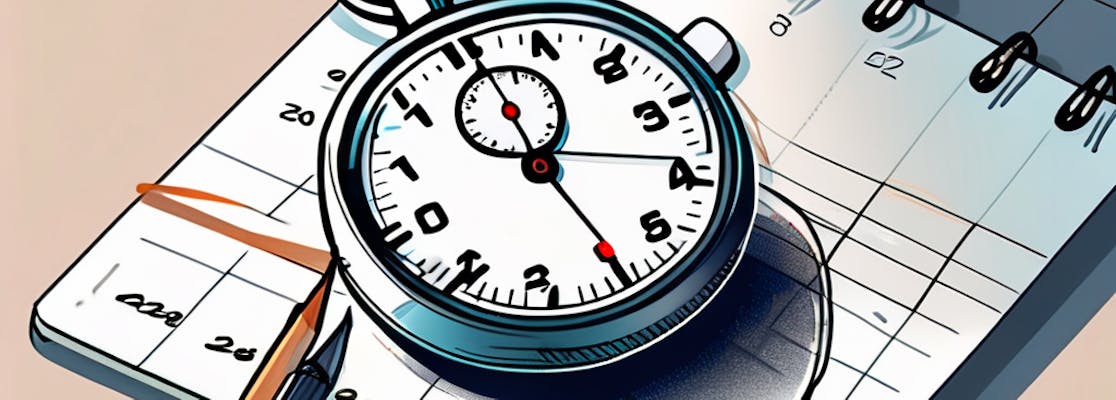How Long Is the SAT? – Test Length Explained
Updated February 27, 2024
- How Long Is Each Section of the SAT?
empty
empty
empty
empty
- How Long Are the Breaks In the SAT?
- Are There Announcements About How Much Time is Left?
- The Importance of Knowing the SAT Test Length
empty
empty
empty
empty
empty
empty
empty
- How to Manage Pace and Timing on the SAT: 5 Essential Tips
- Frequently Asked Questions
- Final Thoughts
The SAT is a standardized test widely used for college admissions in the United States, and one of the most common questions students have about the SAT is how long it lasts.
The total testing time is three hours.
As test formats and durations may change, checking the official College Board website or other reliable sources for the most up-to-date information is essential.
In this article, we will comprehensively explain the test length, including the duration of the entire SAT, each section, and the breaks in between.
We will also discuss the importance of knowing the test length, provide tips for pace and timing on the SAT, answer frequently asked questions about SAT timing and conclude with some final thoughts.
How Long Is Each Section of the SAT?
The total time for the SAT test is three hours. However, the SAT is divided into four main sections, each with a different time constraint:
- Reading: 65 minutes
- Writing and language: 35 minutes
- Math (no calculator): 25 minutes
- Math (calculator): 55 minutes
Each section has a specific time limit, and it is crucial to manage your time effectively to ensure you have enough time to complete all the questions.
Reading
The reading section consists of 52 questions and must be completed within 65 minutes.
This section tests your ability to understand and analyze written passages from various subjects, such as literature, history and science.
You will encounter different question types, including multiple-choice and evidence-based reading questions.
Reading the passages carefully and answering the questions accurately within the given time frame is important.
Writing and Language
The writing and language section also has 44 questions, and the time limit is 35 minutes.
In this section, you will be assessed on your grammar, punctuation, and usage skills.
You will need to identify and correct sentence errors, improve sentence structure, and revise passages for clarity and coherence.
It is essential to have a strong grasp of grammar rules and practice editing sentences to excel in this section.
Math (No Calculator)
The math (no calculator) section includes 20 questions and should be finished within 25 minutes.
This section tests your understanding of algebra, problem-solving and data analysis.
Although you cannot use a calculator in this section, the questions are designed to be solved without one. Practising mental math and learning various problem-solving strategies to tackle the questions efficiently is essential.
Math (Calculator)
The math (calculator) section has 38 questions and a time limit of 55 minutes.
This section also assesses your algebra, problem-solving and data analysis skills, but you can use a calculator.

How Long Are the Breaks In the SAT?
The SAT includes scheduled breaks, which can provide some relief and allow you to recharge during the test.
There are two short breaks during the SAT:
- A 10-minute break after the reading section, which is the first section of the test.
- A five-minute break after the math (no calculator) section is the third section of the test.
These pauses are vital for managing time during the SAT and are designed for stretching, restroom use, snacks, or a mental break.
Using the 10-minute break efficiently after the reading section is crucial.
Stretch, get fresh air or exercise quickly. The break after the math (no calculator) section is a brief respite for reviewing challenging questions, strategizing and having a light snack.
Utilize them for deep breathing or mindfulness to enhance focus and concentration. Return promptly to maximize test-taking time.
Are There Announcements About How Much Time is Left?
During the SAT, no time announcements are made, making it your responsibility to manage time.
A timer on your test booklet or digital interface displays the remaining time for each section; periodically check it to gauge progress.
The SAT assesses not just knowledge but also effective time management. Taking control of time maximizes success and helps achieve your desired score.
The Importance of Knowing the SAT Test Length
Time Management
Understanding the length of the SAT helps you develop effective time management strategies.
By knowing the total duration and the time allocated for each section, you can pace yourself accordingly, ensuring that you have enough time to answer all the questions without rushing.
Endurance and Stamina
The SAT is a lengthy exam, and knowing its duration can help you prepare mentally and physically.
Building your endurance through practice tests under timed conditions can make the actual test day more manageable.
Strategic Planning
Knowing the test length allows you to plan your test-taking strategy, including when to take breaks and how much time to allocate to each question.
This can help improve your overall performance.
Psychological Preparedness
Being aware of the test's length helps reduce anxiety and increases confidence. Understanding what to expect on test day can help alleviate stress and improve focus.
Practice Test Simulation
When you know the exact length of the SAT, you can simulate the test conditions more accurately during your practice sessions.
This helps you get accustomed to the test format and timing, making the actual test feel more familiar.
Balancing Speed and Accuracy
Knowing the time limits for each section helps you balance speed and accuracy. It's important to work quickly but not so fast that you make careless mistakes.
Scheduling
Knowing the test length, including breaks, helps you plan your day accordingly. This is important for logistical reasons, such as arranging transportation and knowing when you'll be finished.
How to Manage Pace and Timing on the SAT: 5 Essential Tips
Step 1. Get Familiar with Test Structure and Timing
Understand the format, number of questions, and time limits for each section. Regularly practice full-length, timed tests to adapt to the timing constraints.
Step 2. Develop an Efficient Strategy
Tackle easy questions first to secure points, then move on to harder ones. For the Reading section, practice quick comprehension techniques; in Math, learn shortcuts and problem-solving strategies.
Step 3. Keep Track of Time During the Test
Use a watch to monitor your progress, ensuring you allocate your time proportionately across questions. Aim to have a few minutes at the end of each section for review.
Step 4. Maintain a Steady Pace
Avoid spending too much time on any single question. If stuck, mark it and move on, returning only if time allows. This helps prevent bottlenecks and keeps you moving forward.
Step 5. Prepare Physically and Mentally
Ensure adequate sleep and nutrition before the test. Practice relaxation techniques to stay calm and focused, reducing the risk of time-wasting anxiety during the exam.
The SAT test generally starts between 8:00 a.m. and 9:00 p.m. and concludes around 1:00 pm. Specific start times may vary, so candidates should refer to their admission tickets for the exact time. It's crucial to arrive early to ensure a smooth check-in process and avoid any disruptions.
The SAT, including breaks, takes approximately three hours. It consists of sections like reading, writing & language and math, with designated breaks strategically placed during the test.
Understanding the overall duration is vital for effective time management and optimal performance on the exam.
Yes, a score of 1,500 is considered excellent on the SAT. It places the test-taker in the top percentile of all students who took the exam. This score demonstrates a strong academic aptitude and is generally well-regarded by colleges and universities during the admissions process.
The standard SAT test duration is three hours. However, details such as test formats and durations may change.
For the most accurate and up-to-date information regarding the SAT test duration in 2025, it's recommended to check official sources like the College Board.
Yes, you can go to the bathroom during the SAT. The test includes scheduled breaks, allowing test-takers to use the restroom.
It's advisable to manage these breaks wisely to ensure ample time to rest and recharge while completing all sections within the allocated time.
The difficulty of the SAT varies for individuals.
It covers reading, writing and math, testing critical thinking and problem-solving skills.
Adequate preparation can enhance performance, including practice tests and understanding the test format.
Difficulty perception is subjective, but focused study and familiarity with the test structure contribute to success.
The SAT is typically offered seven times a year in the United States: August, October, November, December, March, May and June.
International testing dates may vary.
It's crucial to check the College Board's official SAT website for the most current and accurate information on test dates and locations.
The duration of the SAT with extended time can vary based on the specific accommodations granted to an individual.
The standard SAT test without extended time is approximately three hours, not including breaks.
The start time for the SAT can vary depending on the test center and location. Test centers typically administer the SAT on Saturdays, requiring test-takers to arrive at the test center by 7:45 a.m.
However, checking the admission ticket or contacting the test center directly for the most accurate and up-to-date information about the test start time is crucial.
Final Thoughts
Understanding the test length and managing your time is essential to successful SAT preparation.
By knowing the duration of the entire SAT, each section, and the breaks, you can create a study plan that allows you to pace yourself and complete all the questions within the allocated time.
Use the tips in this article to improve your timing skills and practice with realistic timed exams to simulate the test environment.
Time management can significantly impact your SAT score, so practice and prepare accordingly.
Good luck!


